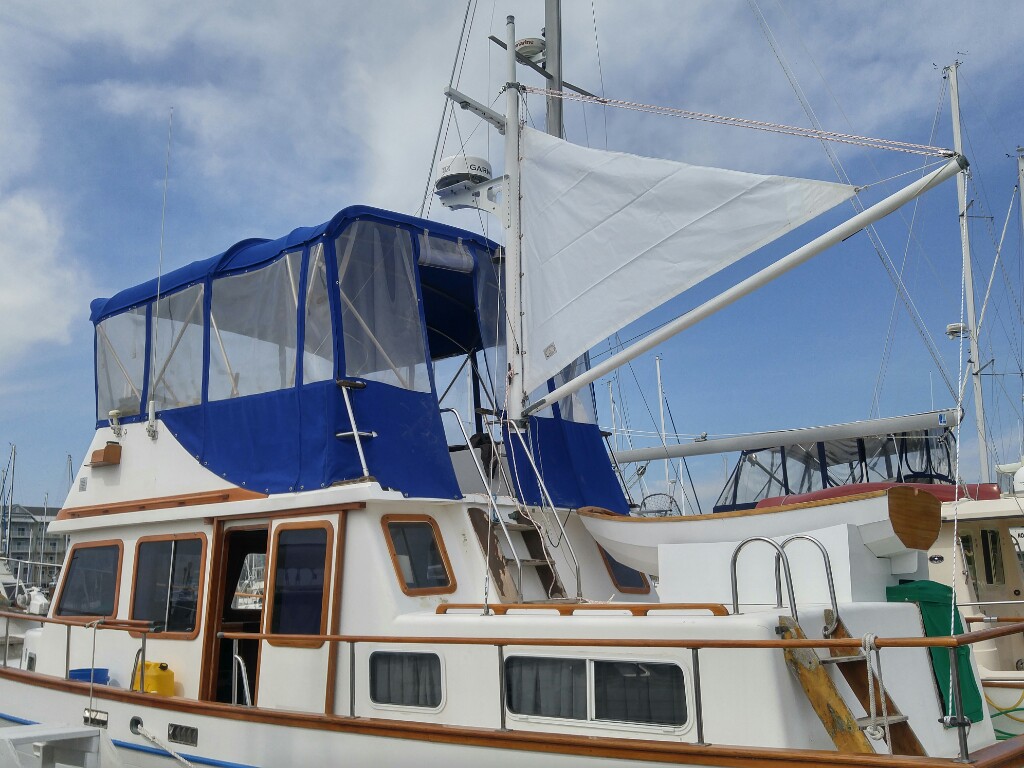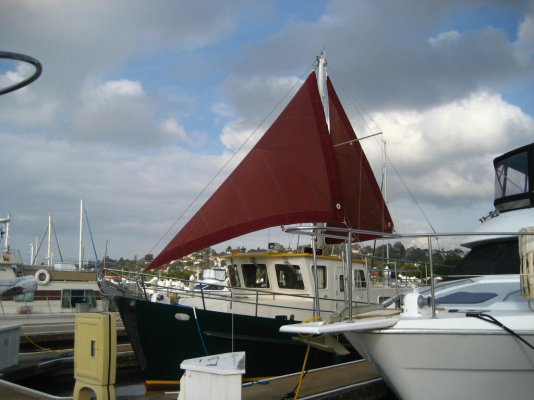seattleboatguy
Senior Member
I hoisted the steadying sail of my Marine Trader 38 today for the first time. It strikes me as comically undersized. My boat rolls a LOT in choppy water, and I am skeptical that a sail this small is going to generate a roll dampening force of much magnitude. But, this is my first steadying sail on my first trawler, so I seek the wisdom of those who have flown steadying sails down through the ages. What say ye?






